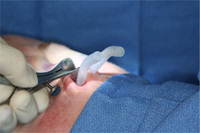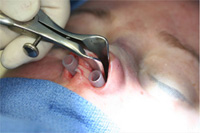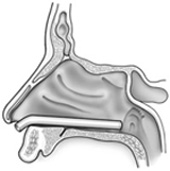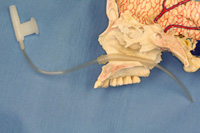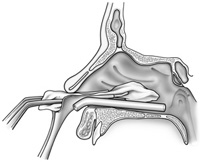The Reltok Clear-Flo™ Nasal Airway System kit consists of:
- The Reltok Clear-Flo™ Nasal Airway, made of medical grade silicone, latex-free.
- The Reltok Ultra-Smooth Septal Splints, Class VI medical grade silicone, Parylene coated enabling a friction-free insertion.
- A standard flexible 10Fr suction catheter.
- A 3 cc Luer Lock irrigating syringe and blue adapter tip.
The septal splints, nasal airway and suction catheter are for use during surgery. The irrigating syringe and tip are for post-operative irrigation.
INDICATIONS FOR USE:
The Reltok Ultra-Smooth Septal Splints are designed to stabilize the reconstructed nasal septum and prevent adhesions between the septum and other intranasal structures.
Reltok Clear-Flo™ Nasal Airway is used to provide nasal/sinus surgery patients’ immediate post-operative period with satisfactory nasal air flow, whether or not the nose is packed or has splints or stent placed within the nasal cavity. The device provides the anesthesia specialist unhindered access for pharyngeal and supra-laryngeal suction following completion of the surgical procedure, in the operating room or recovery room.
WARNING: As with any surgical procedure, care should be exercised in the insertion and maintenance of these devices.
PRECAUTIONS: Inspect package before use. DO NOT USE if package has been opened or is damaged. The contents of this package are for single use only. DO NOT re-sterilize. DO NOT use after expiration date.
CAUTION: Federal law restricts this device for sale by, or on the order of, a license physician.




